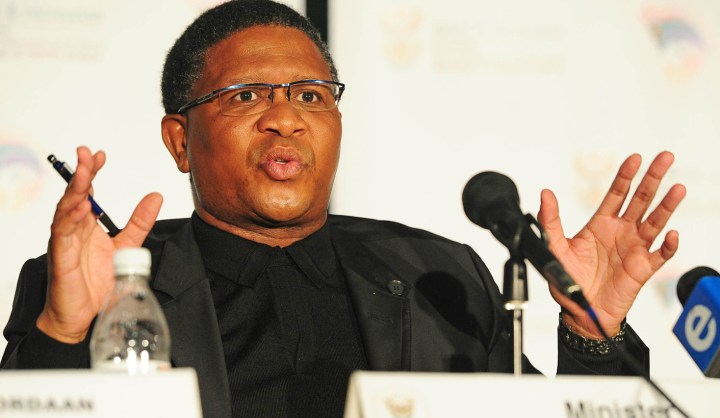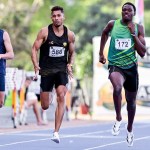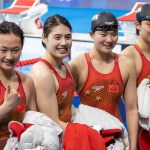Sport
Shocking but not surprising: SA sport’s transformation and development at grassroots level

South Africa’s Mr. Razmatazz has promised serious action following the release of an interim transformation report on sport in South Africa. While most sporting bodies still have a long way to go, the struggles with facilities at grassroots level was the most shocking of the whole thing. By ANTOINETTE MULLER.
Fikile Mbalula, with his usual exuberance, criticised the lack of transformation in sport in South Africa while revealing something everybody already knew: some teams are quite white. (Really.) This also highlighted once again the need for the development of facilities at grassroots level. That is something the government can assist with instead of spending money on things like, say, a very expensive awards ceremony.
The Transformation Status Report 2013, from the Eminent Persons Group (EPG) on Transformation in Sport was released on Tuesday, and the Minister said his department would oversee the establishment of the committees which were recommended in the report.
He went further and threatened an end to support from government, while adding that “the quota system is unsustainable and counterproductive”.
“The national anthem, national colours and national symbols can no longer be used to honour and decorate events of racist, sexist and divisive sports bodies,” Mbalula said.
“No teams or individuals participating in major events at home and abroad will receive government support if they are not responsive to the transformation needs of their sector. This [report] is not a shebeen and beer talk. We have a clear programme of action this time because we never took time to reflect in the 20 years of democracy,” the minister added.
The report is a result of a pilot Transformation Status Survey, which was conducted by the EPG and chaired by Dr Somadoda Fikeni. It examined five national federations, namely Athletics SA, Cricket SA, the South African Football Association, Netball SA and Rugby SA.
The federations had to complete a data sheet and were given an overall score out of 100 based on key areas, which included: skill and capability development, demographic profile, performance, contribution to government priorities and good governance.
The report admitted its shortcomings, with much data missing, but with the available information, rugby was the best performer with 71%, followed by cricket (65%), football (40%), netball (37%) and athletics (22%).
Those overall scores did, to a certain extent, function as smokescreens for the real issues, though, and upon closer inspection, the analysis of participation in the different sporting codes was far more interesting. The demographics were split into two levels with “generic black” and “black African” categories both being taken into account. Across the different levels of Test, ODI, T20 and Under-19 cricket, CSA scored 3.5 on the “black African” category and a perfect ten for “generic black”. Rugby scored 3.4 on the “black African” category and 7.8 on the “generic black” category for their competitions, ranking from Springboks to Under-19s.
“As far as black African representation is concerned, limited progress has been made. At senior level, cricket has achieved only 35% of the black African target. At Under-19 level, however, teams to England and India showed 50% and 80% achievement of the set 50% black African targets respectively,” the report read.
Much has been made about the need for a “black hero” in cricket. This desperation to latch onto anyone with the right skin colour has led to things like the Siphe Mzaidume saga. Since readmission, Makhaya Ntini is the only Black African player to have played more than a handful of Tests for South Africa.
But there is some hope. Across all three semi-pro disciplines, cricket scored a seven in the “Black African” category and, once again, a perfect 10 for the “Generic Black” category. Rugby performed far more poorly, with not a single one of their domestic competitions scoring more than three in the “Generic African” category.
The South African Under-19 World Cup winning squad had two Black Africans play in the final with one of those – Kagiso Rabada – now being fast-tracked and likely to debut for the Lions against the Dolphins on Thursday. He is not the only prominent black cricketer at youth or franchise level, though. While teams at those levels – in both rugby and cricket – could be more representative, the problem isn’t solely there.
The most telling part of the report was the assessment of schools. Facilities are a massive problem across both primary and secondary school level. Rugby has over 1,300 “primary schools in jurisdiction participating”, while cricket has just over 1,500. Playing facilities available to those schools are badly lacking, though. Rugby has just 813 while cricket has 905.
That means the average number of facilities per school for rugby, football and cricket is less than one, restricting the number of teams and league competitions that can be accommodated and is counterproductive to any footprint and participation increase exercises.
Without sufficient facilities, coaches and organisers, false expectations are created and progress is extremely limited. The percentage of participation is also crucial. Rugby did not provide data, but cricket indicated a mere 20 percent participation rate.
At secondary – or high school – level, rugby, football and cricket were the only codes to provide data for secondary schools in areas of jurisdiction who participate. Cricket has 1,044, rugby 1,147 and football 3,000, but the number of facilities available to schools are pitiful, as mentioned previously. This poses the same problem as with primary schools. However, at secondary level, the problem is coupled with the declining number of teachers involved in organising sport. In short, SA sport at school level is collapsing.
There were some data figures regarding rugby and football which the report claimed “[did] not make sense”, and which will be followed up on.
Let’s face it, most of the elite sportsmen are only coming from a handful of schools. Those are privileged schools with good facilities, with feeder schools, where kids are coached from a very young age. The participation and facilities in the jurisdiction of the sporting codes is disconcerting, and can only be improved by a concrete effort from both the sporting bodies themselves and the various government departments.
A fraction of millions that are spent on the SA Sports events, could send three Black Africans to a top cricket school like Wynberg for a year. R57,600 could send three kids to Paarl Gym, a top rugby school, for year. R16,500 sends one child to school at Grey College for a year. Those are just some figures from some of South Africa’s notable “sporting” schools.
Sure, sporting bodies can, should and will do more to encourage transformation. But let’s not kid ourselves – the government is equally responsible for what happens at grassroots level, and to pay lip service to what needs to be done is no good if money bleeds on unnecessary and dubious expenses. DM
Photo: Sports Minister Fikile Mbalula briefs journalists on the international friendly between Bafana Bafana and Brazil during a news conference in Johannesburg, Thursday, 6 March 2014. Picture: GCIS/SAPA




















 Become an Insider
Become an Insider